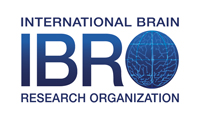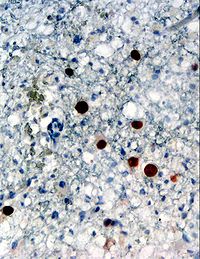
Molecular Signature of Astrocytes for Gene Delivery by the Synthetic Adeno-Associated Viral Vector rAAV9P1.
Sign Up to like & getrecommendations! Published in 2022 at "Advanced science"
DOI: 10.1002/advs.202104979
Abstract: Astrocytes have crucial functions in the central nervous system (CNS) and are major players in many CNS diseases. Research on astrocyte-centered diseases requires efficient and well-characterized gene transfer vectors. Vectors derived from the Adeno-associated virus… read more here.
Keywords: adeno associated; raav9p1; gene; human astrocytes ... See more keywords

In Vitro Direct Reprogramming of Mouse and Human Astrocytes to Induced Neurons.
Sign Up to like & getrecommendations! Published in 2020 at "Methods in molecular biology"
DOI: 10.1007/978-1-0716-0655-1_4
Abstract: Direct neuronal reprogramming, rewiring the epigenetic and transcriptional network of a differentiated cell type to neuron, apart from being a very promising approach for the treatment of brain injury and neurodegeneration, also offers a prime… read more here.
Keywords: neurons vitro; induced neurons; mouse human; human astrocytes ... See more keywords

Tibolone Ameliorates the Lipotoxic Effect of Palmitic Acid in Normal Human Astrocytes
Sign Up to like & getrecommendations! Published in 2020 at "Neurotoxicity Research"
DOI: 10.1007/s12640-020-00247-4
Abstract: Lipotoxicity is a pathological condition resulting from the excessive accumulation of fatty acids, like palmitic acid (PA), within the cell. This pathological phenomenon induces deleterious metabolic changes in cells and is associated with neurodegenerative diseases,… read more here.
Keywords: palmitic acid; ameliorates lipotoxic; tibolone ameliorates; human astrocytes ... See more keywords

Human astrocytes are distinct contributors to the complexity of synaptic function
Sign Up to like & getrecommendations! Published in 2017 at "Brain Research Bulletin"
DOI: 10.1016/j.brainresbull.2016.08.012
Abstract: Cellular components of synaptic circuits have been adjusted for increased human brain size, neural cell density, energy consumption and developmental duration. How does the human brain make these accommodations? There is evidence that astrocytes are… read more here.
Keywords: human brain; astrocytes distinct; human astrocytes; distinct contributors ... See more keywords

Mutations in GFAP Disrupt the Distribution and Function of Organelles in Human Astrocytes
Sign Up to like & getrecommendations! Published in 2018 at "Cell reports"
DOI: 10.1016/j.celrep.2018.09.083
Abstract: SUMMARY How mutations in glial fibrillary acidic protein (GFAP) cause Alexander disease (AxD) remains elusive. We generated iPSCs from two AxD patients and corrected the GFAP mutations to examine the effects of mutant GFAP on… read more here.
Keywords: disrupt distribution; human astrocytes; axd astrocytes; mutations gfap ... See more keywords

Neurotoxic effects of aflatoxin B1 on human astrocytes in vitro and on glial cell development in zebrafish in vivo.
Sign Up to like & getrecommendations! Published in 2019 at "Journal of hazardous materials"
DOI: 10.1016/j.jhazmat.2019.121639
Abstract: Aflatoxin B1 is one of the well-known mycotoxins and mainly found in contaminated animal feed and various agricultural products inducing acute and chronic toxicology, tumor, and abnormal neural development. However, the effects of aflatoxin B1… read more here.
Keywords: neurotoxic effects; effects aflatoxin; human astrocytes; aflatoxin human ... See more keywords

Involvement of monocarboxylate transporter 1 (SLC16A1) in the uptake of L‐lactate in human astrocytes☆
Sign Up to like & getrecommendations! Published in 2018 at "Life Sciences"
DOI: 10.1016/j.lfs.2017.10.022
Abstract: Purpose: Astrocytes, the most abundant glial cells in the central nervous system (CNS), help neurons survive. Monocarboxylate transporters (MCTs) are reported to transport L‐lactate, which is important for CNS physiology and cognitive function. However, it… read more here.
Keywords: lactate transport; uptake lactate; lactate; human astrocytes ... See more keywords

Cadmium‐induced IL‐6 and IL‐8 expression and release from astrocytes are mediated by MAPK and NF‐&kgr;B pathways
Sign Up to like & getrecommendations! Published in 2017 at "Neurotoxicology"
DOI: 10.1016/j.neuro.2017.03.001
Abstract: HIGHLIGHTSCadmium accumulated in cultured human astrocytes.Cadmium, at non‐toxic concentrations, stimulated IL‐6 and IL‐8 release from cultured human astrocytes.Inhibition of ERK1/2 and NF‐&kgr;B pathways decreased cadmium‐induced IL‐6 production in cultured human astrocytes.Inhibition of ERK1/2, p38 MAPK… read more here.
Keywords: cadmium induced; production; kgr; human astrocytes ... See more keywords

Loss of IGF1R in Human Astrocytes Alters Complex I Activity and Support for Neurons
Sign Up to like & getrecommendations! Published in 2018 at "Neuroscience"
DOI: 10.1016/j.neuroscience.2018.07.029
Abstract: Highlights • We have established a novel human astrocyte-neuron co-culture system.• Astrocytes provided contact-mediated support for neurite outgrowth.• IGF1R-impaired astrocytes are less able to protect neurons under stress conditions.• Microarray analysis of these astrocytes identified… read more here.
Keywords: loss igf1r; human astrocytes; astrocytes alters; igf1r ... See more keywords

JC Polyomavirus Infection Reveals Delayed Progression of the Infectious Cycle in Normal Human Astrocytes
Sign Up to like & getrecommendations! Published in 2019 at "Journal of Virology"
DOI: 10.1128/jvi.01331-19
Abstract: Animal models are crucial in advancing biomedical research and defining the pathogenesis of human disease. Unfortunately, not all diseases can be easily modeled in a nonhuman host or such models are cost prohibitive to generate,… read more here.
Keywords: jcpyv; infection; jcpyv infection; cell ... See more keywords

High Glucose Enhances Neurotoxicity and Inflammatory Cytokine Secretion by Stimulated Human Astrocytes.
Sign Up to like & getrecommendations! Published in 2017 at "Current Alzheimer research"
DOI: 10.2174/1567205014666170117104053
Abstract: BACKGROUND Chronic neuroinflammation caused by activation of microglia and astrocytes in the brain contributes to neuronal loss and disease progression in Alzheimer's disease (AD). Recent research has identified type 2 diabetes mellitus (T2DM) as a… read more here.
Keywords: secretion; enhances neurotoxicity; glucose enhances; high glucose ... See more keywords